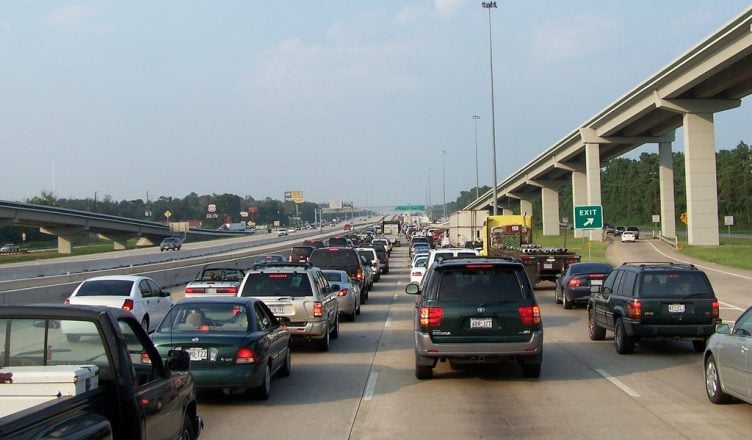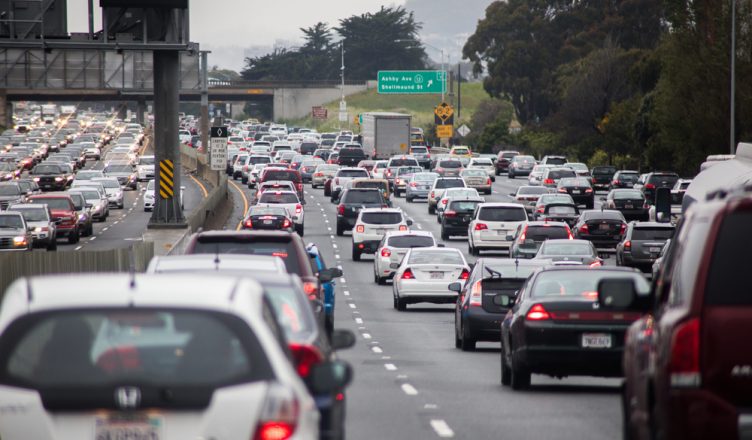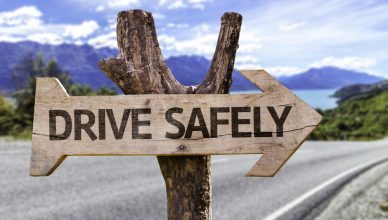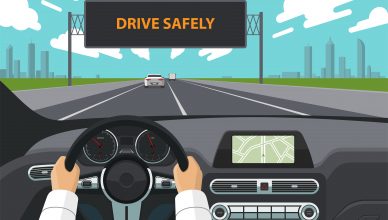Traffic jams are getting worse. According to the transportation consulting firm INRIX, traffic congestion in 2017 cost $305 billion in the United States alone. That’s a $10 billion jump from $295 billion in 2016.
What Causes Traffic Congestion
In Los Angeles, the city with the world’s longest rush hour traffic delays, drivers spend an average of 102 hours sitting in traffic every year. This costs the city over $19 billion annually, with each driver kicking in $2,828.
Boston, Miami, and Washington, D.C aren’t much better, as traffic costs over $2,000 per driver in those cities as well. In addition to wasted fuel, the cost of congested roads includes all the potential productivity that it wastes. If drivers weren’t stuck in traffic, they could be doing something else.
Why do traffic jams even happen? Will they be even worse in the future? How should you, as a field service manager, deal with the expenses and challenges that come with traffic? We’ll address all of those questions in this article.
But first, let’s take a look at the worst traffic jams in American history.
The 4 Worst Traffic Jams in American History
1. Bethel, New York – 1969
50,000 people were expected to visit Max Yasgur’s farm in Bethel, New York for the Woodstock Music & Arts festival. Instead, around half a million people showed up. This brought the New York State Thruway to a standstill for more than 20 miles. Performers had to be flown to and from the festival in helicopters.
2. Houston, Texas – 2005
With Hurricane Rita approaching, around 2.5 million people evacuated the Houston metro area on September 21, 2005, which led to a massive 100 mile-long jam on Interstate 45. The congestion reportedly lasted for almost two days.

Image credit: Donald Rogers, Flickr under CC By 2.0. No changes were made.
3. New York City, New York – 2001
Following the horrific attacks on the World Trade Center on 9/11, New York City was completely locked down. Tunnels and bridges were closed. Public transportation was closed to everyone except emergency vehicles. Traffic was at a dead stop throughout the city. Even air traffic was grounded, leaving many travelers stranded across the US. The gridlock went on for days.
4. Chicago, Illinois – 2011
Over 20 inches of snow fell on the Windy City on February 1, 2011 in a late-winter blizzard that hit the hardest during the evening rush hour. Commuters who were heading north on Lake Shore Drive from downtown Chicago were affected the most. The weather caused several major accidents, and commuters were stuck in traffic for over 12 hours. Many cars became almost completely buried in snow as they waited for the traffic to clear.

Image credit: Victorgrigas at English Wikipedia [CC0], from Wikimedia Commons
The Causes of Traffic Jams
According to the Department of Transportation (DOT), there are two types of traffic congestion: recurring and non-recurring.
Roughly half of congestion falls under the recurring category, which happens due to a lack of enough road capacity to accomodate a high number of vehicles. The other half of traffic jams are non-recurring, which are usually temporary. Non-recurring congestion is mainly caused by bad weather, work zones, and accidents (which can range from minor incidents like a flat tire to seriously dangerous situations like an overturned hazardous materials truck).
Now, let’s try to understand how different scenarios can cause traffic congestion.
Environmental Effects
It’s obvious that adverse weather, such as snowstorms and heavy rain, has a significant effect on both traffic and road conditions. Even a light drizzle can have an impact, since all the drivers on the road will slow down at the same time. In fact, road collisions increase by about 50% during rain and snow according to one study. And according to DOT, bad weather contributes to 15% of total traffic congestion cases.

Also, environmental disasters like hurricanes and mudslides can completely change traffic patterns for months, if not permanently.
Unfortunately, you can’t control the weather. However, using the best route planner app can avoid getting stuck in traffic due to weather conditions.
A daily route planner takes just 30 seconds to plan accurate and efficient routes. It accounts for weather and traffic, so you won’t need to worry about that.
Want To See For Yourself How Route4Me Can Boost Your Profits?
Whether you want to slash the time it takes you to plan routes for your drivers, increase the number of stops they can make, or keep your customers satisfied knowing that your drivers show up on time… Route4Me helps you achieve that!
Human Error
Humans are just as responsible for traffic congestion as the environment. From distracted driving to speeding, there are many instances where humans cause collisions, which creates traffic.
In fact, according to a report by the National Highway Traffic Safety Administration, speeding-related accidents accounted for 27% of traffic fatalities in 2016. Also, an estimated 650,000 drivers are using their cell phones while driving at any given time during the day, which shows you just how much-distracted driving is happening on the road.
Bad driving behavior can even lead to phantom traffic jams. This occurs when there’s already a heavy volume of cars on the road and then a driver brakes harshly (often because they were distracted), which causes a ripple effect.
Essentially, because the driver brakes so suddenly, the driver behind them has to also brake harshly in order to avoid a collision, which forces the driver behind them to brake harshly to avoid a collision, etc. Once a driver gets through the congested spot, it’ll seem like absolutely nothing caused the traffic jam at all. It only takes one mistake committed by one driver to slow everyone down.
Clearly, distracted driving and speeding need to be controlled. GPS tracking software can help businesses improve the driving behavior of their field employees, as it allows you to monitor the location and speed of your drivers on the road in real time. GPS trackers can even come with a speed alert feature. This feature will immediately notify you when a driver goes over the speed limit, so you can contact them immediately and tell them to slow down.
In a nutshell, you need to track your field employees’ driving activities and provide feedback and training when improper driving behavior occurs. Luckily, Route4Me offers Safety4Me, which allows you to do exactly that. When Safety4Me detects dangerous driving behavior from a particular driver, such as hard acceleration or harsh cornering, it automatically assigns them to a training lesson focused on what they need to improve.
Poor Infrastructure
The infrastructure built to accommodate vehicles is often another reason for excessive traffic congestion. For example, when poor quality construction materials are used to build roads, it could lead to potholes, which can slow cars down and create traffic.
According to DOT, bottlenecks alone account for 40% of traffic congestion. And improving infrastructure means construction, which accounts for 10% of traffic congestion.
But not all problems with road infrastructure are the direct fault of engineers. Sometimes, the need to use a road increases rapidly, and the engineers might not have been able to foresee such high demand when they were planning the road.
Mechanical Failure
Mechanical failure, such as a sudden vehicle breakdown, can create traffic congestion as well. Sometimes mechanical failures happen out of nowhere. For example, a driver might accidentally run over a piece of sharp debris in the road and puncture a vital part of their car that’s exposed in the undercarriage. However, mechanical failures often happen simply because the driver waited too long to take their car in for routine maintenance.
Regardless of how a vehicle breaks down, the driver needs to get off the road as quickly as they can. But they might be in a difficult situation, like driving in the leftmost lane of a five-lane highway, where they won’t have enough time to do that. So a vehicle could get stuck in the middle of the road, which can create a huge traffic jam.
The Future of Traffic Jams
According to Cathis Elmsäter-Svärd, Chairwoman of Drive Sweden and a member of the Global Future Council on Mobility, traffic congestion will only be reduced once we have an automated transport system in place. Such a system would involve various forms of transport (including self-driving cars, buses, and bicycles) that are seamlessly integrated by technology.
Elmsäter-Svärd also believes that products will be delivered differently in the future. For example, small robots could be making last-mile deliveries. Alternatively, people could have their shopping delivered to a convenient drop-off location within a sophisticated network, where they can then collect their parcels at their leisure.
All this should make transport more efficient in the near-future and reduce the number of vehicles on the road. In addition to the benefit of improved traffic, this would help reduce noise pollution and improve air quality.
Will this really happen, or is it just a pipe dream? We can only wait and see.
So, what’s the worst traffic in America that you’ve ever experienced? Have you explored any technology solutions, such as a route planner, to counter traffic jams? Feel free to let us know in the comments section below.
Finally, answering these three questions correctly will ensure that you understand traffic congestion:
- How can bad weather cause traffic congestion?
- How can a GPS tracker help you reduce bad driving behavior?
- What is a phantom traffic jam?
Want To See For Yourself How Route4Me Can Boost Your Profits?
Whether you want to slash the time it takes you to plan routes for your drivers, increase the number of stops they can make, or keep your customers satisfied knowing that your drivers show up on time… Route4Me helps you achieve that!






